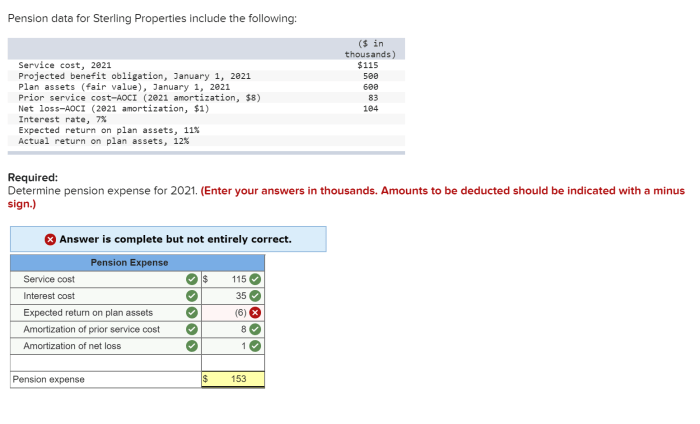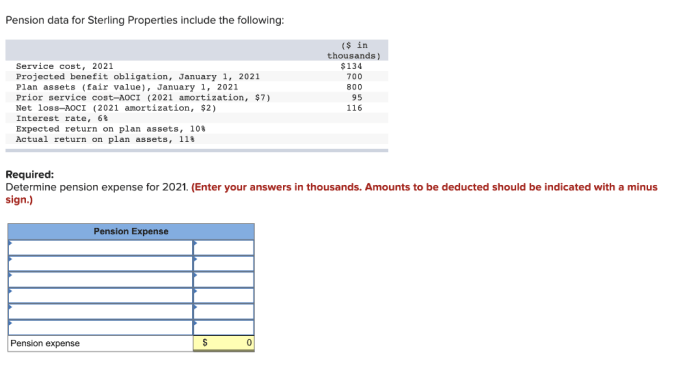Pension data for sterling properties include the following – Delving into pension data for sterling properties, this article provides a comprehensive overview of the types of data available, analysis methods, key performance indicators, reporting strategies, and data security measures. With a focus on clarity and conciseness, we aim to equip readers with a thorough understanding of this crucial aspect of property management.
Pension data plays a pivotal role in evaluating the financial health and performance of sterling properties. By analyzing this data effectively, property owners and managers can make informed decisions, optimize investment strategies, and ensure the long-term sustainability of their assets.
1. Pension Data Overview

Pension data for Sterling Properties provides a comprehensive view of the company’s retirement plan assets, liabilities, and cash flows. This data can be used to assess the health of the plan, make informed investment decisions, and ensure compliance with regulatory requirements.
The types of pension data available include:
- Plan assets, including investments in stocks, bonds, and real estate
- Plan liabilities, including vested and non-vested benefits
- Cash flows, including contributions from employees and the company
The data is provided in a variety of formats, including electronic spreadsheets, printed reports, and online databases. The data is accessible to authorized users through a secure portal.
2. Data Analysis Methods: Pension Data For Sterling Properties Include The Following

The appropriate methods for analyzing pension data depend on the specific objectives of the analysis. Common methods include:
- Statistical analysis:This involves using statistical tools and techniques to describe and summarize the data, identify trends, and test hypotheses.
- Financial analysis:This involves using financial ratios and other metrics to assess the financial health of the plan and its ability to meet its obligations.
- Investment analysis:This involves using investment tools and techniques to evaluate the performance of the plan’s investments.
Best practices for data visualization include:
- Using clear and concise charts and graphs
- Labeling all axes and legends
- Highlighting important trends and insights
3. Key Performance Indicators (KPIs)

Key performance indicators (KPIs) are metrics used to measure the performance of a pension plan. Common KPIs include:
- Funded ratio:This measures the plan’s assets as a percentage of its liabilities.
- Investment return:This measures the annualized rate of return on the plan’s investments.
- Expense ratio:This measures the plan’s expenses as a percentage of its assets.
Industry benchmarks and comparisons can be used to assess the performance of a pension plan relative to its peers.
4. Data Reporting and Presentation
Pension data should be reported and presented in a clear and concise manner. A table template can be used to present the data in a structured format. A dashboard or interactive visualization can be used to showcase the data and provide insights.
Effective communication strategies for reporting findings include:
- Using clear and concise language
- Highlighting key trends and insights
- Making recommendations for action
5. Data Security and Confidentiality
Pension data is highly sensitive and must be protected from unauthorized access and disclosure. Sterling Properties has implemented a comprehensive data security program that includes:
- Encryption of all data
- Access controls to limit access to authorized users
- Regular security audits
Sterling Properties is also compliant with all relevant regulations and standards, including the Employee Retirement Income Security Act (ERISA).
FAQ Insights
What types of pension data are available for sterling properties?
Pension data for sterling properties typically includes information on contributions, distributions, investment performance, and actuarial valuations.
How can I analyze pension data effectively?
Appropriate methods for analyzing pension data include statistical analysis, ratio analysis, and trend analysis. Statistical tools and techniques can help identify patterns and relationships within the data, while ratio analysis allows for comparisons between different metrics.
What are the key performance indicators (KPIs) used to measure pension performance?
Common KPIs used to measure pension performance include the funded ratio, investment return rate, and expense ratio.